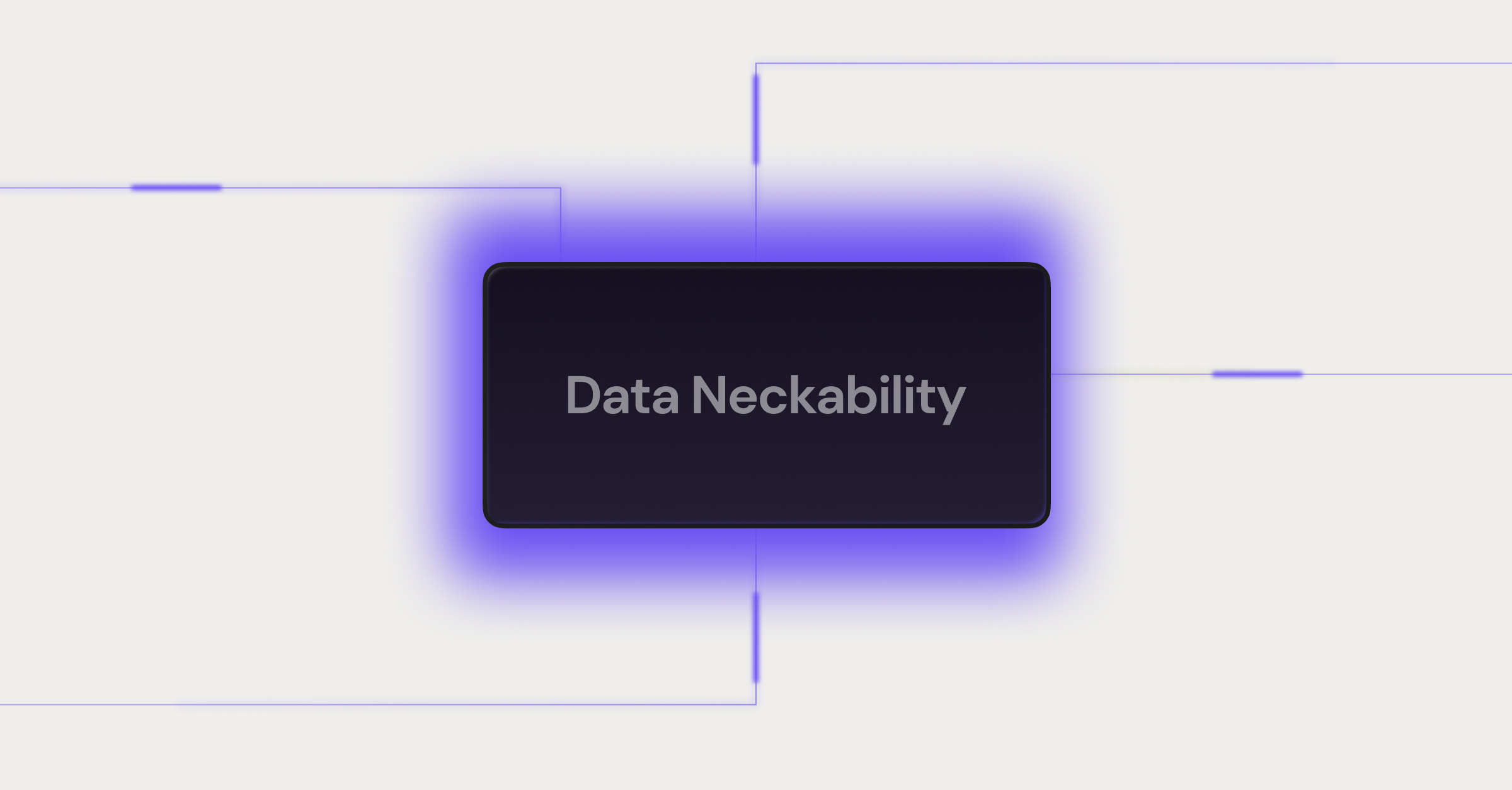For enterprise AI to deliver value, data must be more than accessible - it must be structured, contextualized, and ready to act on.
That means no manual tagging. No brittle connectors. No last-minute patchwork to make data usable. It means clean flow across formats and systems, so information lands in a form that’s queryable, explainable, and usable by AI agents, analysts, and business users alike.
At EmergeGen, we call this Data Neckability: the ability to ingest, reconcile, and serve all types of enterprise data, with the speed and structure required for real-time AI.
In this post, we’ll unpack what neckability means, what makes it possible, and why we see it as a more practical and measurable benchmark for AI-ready data infrastructure.
The Qualities of Neckable Data
Enterprise data isn’t valuable unless it can flow where it’s needed, when it’s needed. In an enterprise environment, that means three things:
1. Accessibility
Data can be pulled from anywhere - across structured, semi-structured, and unstructured formats - and made available without tagging or delay.
2. Usability
It arrives in context: fully stitched, query-ready, and compatible with the agents, workflows, or humans that need to use it.
3. Actionability
Neckable data enables something to happen, whether that’s generating insights, triggering a process, or supporting a compliance decision.
This is the level of readiness that GenAI systems - and the enterprises deploying them - now require. AI agents need structured, contextualized inputs they can reason over. Business users need fast, reliable answers they can act on. Compliance teams need traceability and control baked in.
Most platforms still fall short, because they rely on architectures that weren’t built for real-time orchestration - just retrieval.
What’s Under the Hood
Neckability depends on how the system is built from the start. Our Data Central platform was designed to handle complexity at scale: reconciling structured, semi-structured, and unstructured data automatically, with no tagging or middleware required.
Three core components make this possible:
- SLMs (Small Language Models)
Optimized for enterprise environments, our SLMs extract and classify data with high precision, avoiding the hallucination risks and high computing costs of general-purpose LLMs. - Super Ontology
This is the intelligence layer that understands how concepts connect. It maps relationships dynamically across data types and domains, turning fragmented inputs into fully stitched, context-rich outputs. - Composable Pipeline
Data is ingested from any format or source and structured in real time, with governance and explainability built in from the start.
This combination is what enables data to move smoothly across systems and formats and arrive ready for AI orchestration, analysis, or compliance.
Why Findable Doesn’t Always Mean Usable
Many enterprise data platforms have improved how teams find and manage information through tools like search, tagging, and metadata cataloging. These are useful features, but they don’t solve the deeper issue of fragmentation.
In most cases, data remains siloed by format, system, or department. Even when it’s indexed or labelled, it still lacks the structural consistency and context needed for downstream use - especially in GenAI applications, where quality and interpretability are critical.
What’s missing is a way to integrate meaning across data types. Not just linking or surfacing information, but actually stitching it into a form that’s usable in real time for agents, analysts, or applications.
This is where we take a different approach: rather than adding a layer on top of existing data, the platform restructures data as it comes in - stitching across formats, resolving context, and applying governance upfront. This stitched layer becomes the foundation for querying, automation, compliance, and analytics.
It’s a different model - one designed for environments where speed, scale, and accuracy are non-negotiable.
How Neckable Data Changes The Game
Once data becomes neckable - accessible, usable, and actionable by default - a new set of possibilities opens up. These translate directly into how teams deploy AI, manage risk, and work faster.
Here’s what that looks like in practice:
- Safer GenAI deployments: With stitched, verified inputs, models operate on structured context rather than loose associations. This reduces hallucinations and enables explainability at every step.
- Faster insight generation: Instead of parsing raw files or wrangling semi-structured exports, teams can query stitched datasets directly across formats. For example: extracting 30 financial metrics from a 75-minute call recording in seconds.
- Built-in governance and traceability: Because stitching happens within a governed pipeline, data lineage is preserved automatically, making compliance easier even as speed increases.
- Cross-domain reasoning: With unified data, agents can move between systems, departments, and domains without losing context.
Neckability turns infrastructure into enablement, and sets a foundation that scales across teams, tools, and time.
See It in Action
If you’re tracking the shift toward truly AI-ready data infrastructure or want to see how organisations are applying these principles in the real world, sign up to our newsletter: The Data Activist Drop. We share insights on architecture, governance, and generative AI, straight from the team building the tech.
Subscribe to the EmergeGen newsletter
And if you're ready to talk specifics, our team can walk you through how EmergeGen fits within your current architecture and goals. Reach out at sales@emergegen.ai to book a call.

